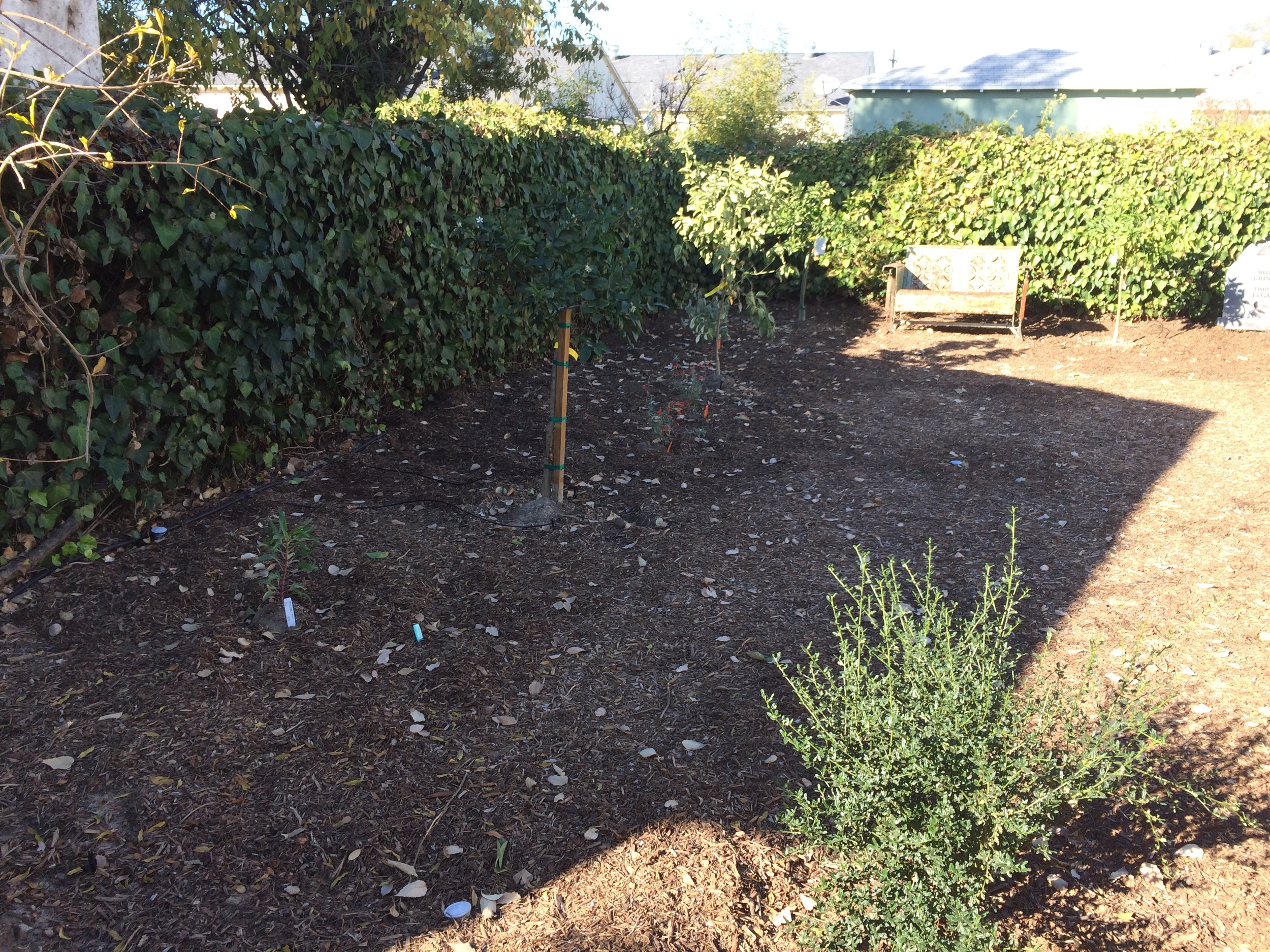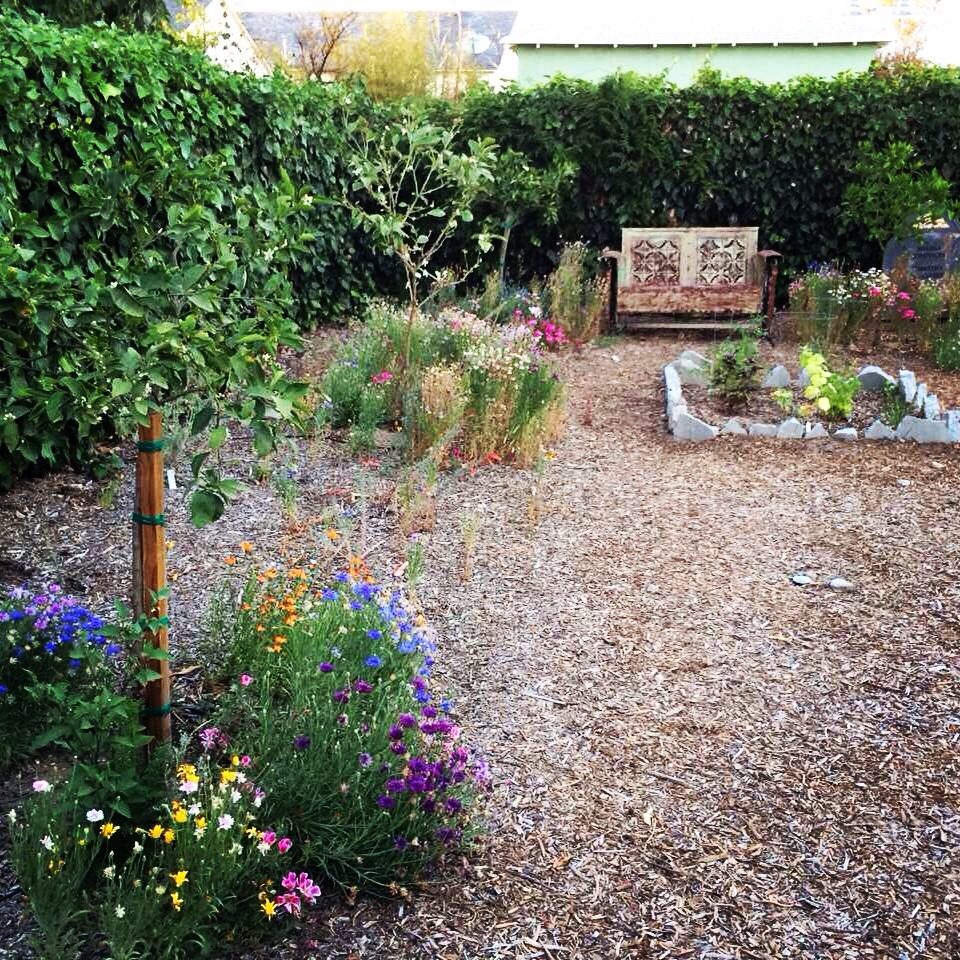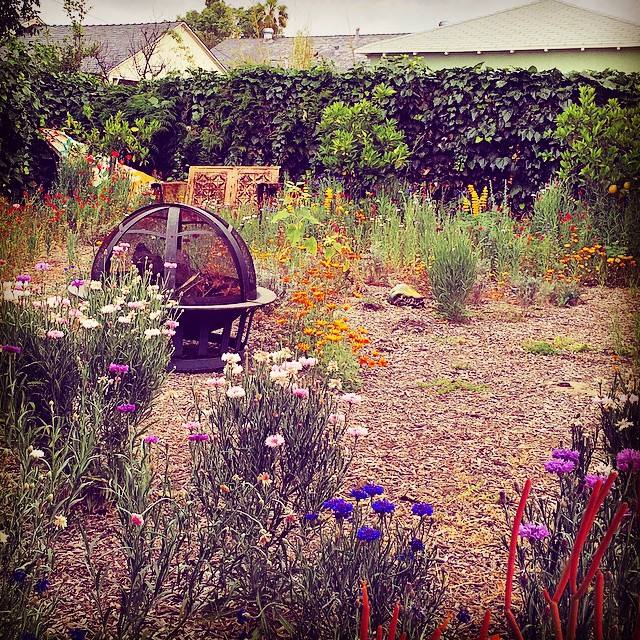Going Native
When I lived in Brooklyn I had a teeny tiny container garden (above). I’d lovingly haul water out to my terrace every day and meticulously examine each potted plant for signs disease or general discontent. I’d fantasize about the day when I’d have a yard with a garden. Fast forward to me moving cross-country to Los Angeles and getting my wish.
Now we have a house of our own with yard a-plenty in scorching North Hollywood and I’ve learned that there is a world of difference between east coast container gardening and west coast yard gardening. I needed schooling so signed up for California native gardening classes at the Theodore Payne Foundation. Theodore Payne's design courses are fantastic and they often have special lecture offerings on top of their standard design and maintenance classes. I've taken the "Three Part Design" course twice. Over the course of a few weeks you create a design for your property and then the class and teacher critique it and help steer you in the right direction. All the teachers are great but I highly recommend the brilliant Andreas Hessing of ScrubJay Studios. Andreas is a purist; he only designs California native gardens. If you are lucky enough to be invited to his home and see what he's done with his own property, you'll see why he's one of the best designers in LA. Here are a few photos of his own garden below.
I’ve also fallen in love with the Las Pilitas website which has a wealth of information on individual plants and also offers plant suggestions for your zip code, soil type, and watering preferences. The predominant message is: go native or go home.
You do not enter the state of California without being schooled on the importance of water and energy conservation. I’ve joked that everyone is handed a bushel of kale and a Prius when they cross the California border and that’s not really all that far off. Theodore Payne also turned me on to the lawn removal rebate through the Los Angeles Department of Water and Power. I applied and was almost immediately approved for it. The city will essentially reimburse you for the cost of removing your water sucking lawn and replacing it with drought tolerant plants, permeable mulch, and pathways up to a certain amount. Applying is easy and I know that other areas such as Burbank have comparable programs. Make sure to read the rules carefully and don't start removing your lawn before you have applied and are approved. Free money to landscape with!
Removing a lawn properly, however, is no easy task. You must first remove all the existing turf. For me, with over 7000 sq ft of verdant majesty, this proved daunting. The most efficient way is to rent a turf cutter or hire someone to remove it for you, I chose the latter. Finding someone in LA who removes turf professionally took some doing. Most landscape folks don’t typically do this work. After a few estimates and a lot of research, I finally went with Bottoms Up Gardens and in one single day the entire 7000 plus sq. ft. of turf were gone and the yard covered in organic mulch which is the perfect blank canvas. Gwyny Pett and her team at Bottoms Up are charming, efficient, and knowledgable. They stand by their turf removal and even came back to my house a few weeks later to dig up a few stubborn patches that returned free of charge. Here are a few pictures of our yard, still very much in progress. From lawn to wildflower mayhem which is only the beginning. We are about to go into the peak season for native gardens and wild flowers and I have some big plans.
After removing the turf, it’s ideal to kill all the existing seeds so that your grass won’t re-germinate. The greenest way to do this is through solarization or baking the area under clear plastic for two months. The best time to start is late July through mid September when the temperatures are highest. First, dig a trench around the area you want to solarize then cover the area with clear plastic and dump the earth back into the ditch, trapping the edges of the plastic down to create a tight seal. After two months of baking in the sun, most seeds will be done for. Sadly, I started my lawn removal too late in the season to solarize so I occasionally still need to weed a few patches to keep the grass from coming back. For a more comprehensive step by step, take the "Look Ma, No Lawn" class at Theodore Payne.
Stay tuned for the evolution of our garden and my successes and failures with California natives and other drought tolerant plants. Now I just need to convince Tim to get a goat or two.
















